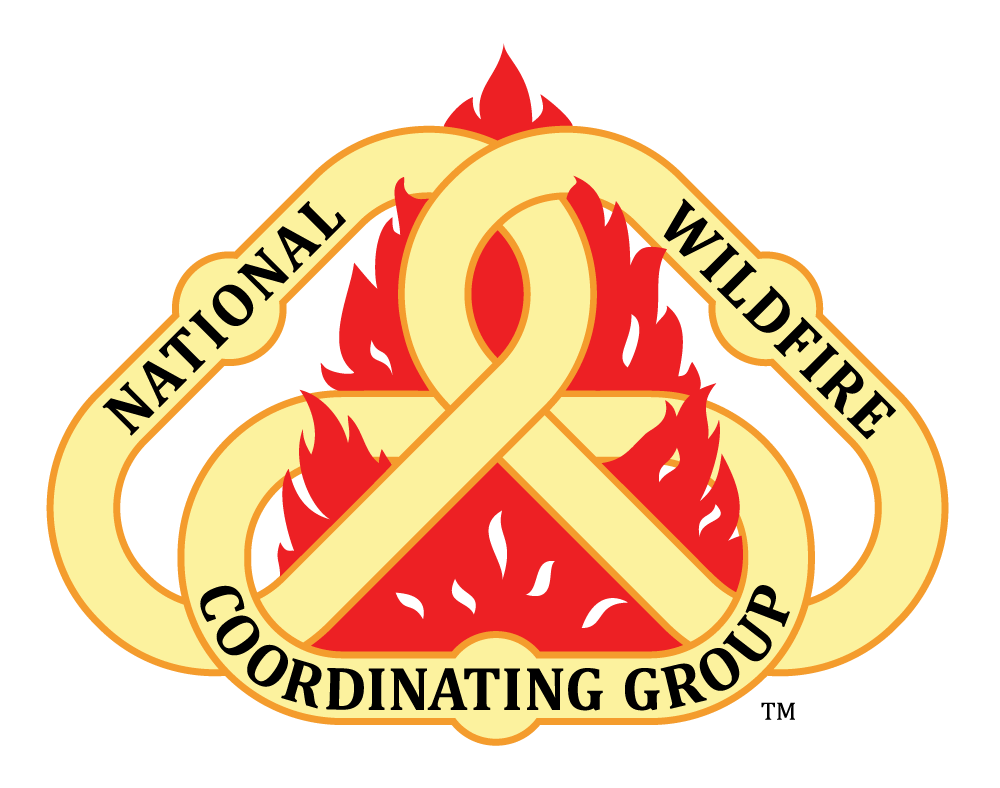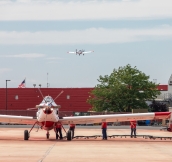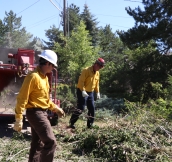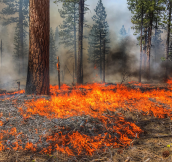STCR Incident Position Description
The Strike Team Leader Crew (STCR) directs two crews of the same Incident Command System (ICS) type in performing tactical missions on a division or segment of a division on wildland fire incidents. The STCR reports to a Division/Group Supervisor (DIVS), Incident Commander (IC), or other assigned supervisor. The STCR works in the Operations functional area.
Leadership Level 3, Leader of People (Develop Intent)
- For additional information review Level 3 description, expected behaviors and knowledge, suggested development goals, and self-study opportunities.
Prepare and Mobilize
- Ensure individual readiness.
- Gather critical information pertinent to the assignment.
- Travel to and check in at assignment.
- Review Incident Action Plan (IAP) and obtain briefing, objectives, and intent from supervisor.
Build the Team
- Identify assigned resources and maintain accountability. Confirm that IAP or relevant plan has all assigned resources listed. Report any missing resources up chain of command.
- Assemble and validate readiness of assigned personnel and equipment.
- Verify that handcrew leadership [Crew Boss (CRWB), Firefighter Type 1 (FFT1)] meet English language/crew language comprehension requirement.
- Establish and communicate chain of command, reporting procedures, risk management processes, and radio frequency management.
- Establish a common operating picture with supervisors and subordinates.
- Participate in operational briefings as directed.
- Obtain and distribute IAPs, other relevant plans, maps, and local area information.
- Brief assigned personnel using IAP and/or NWCG Incident Response Pocket Guide (IRPG), PMS 461 briefing checklist.
Supervise and Direct Work Assignments
- Establish and communicate objectives, priorities, work assignments, and performance expectations.
- Identify, analyze, and use relevant situational information to make more informed decisions and take appropriate actions.
- Adjust actions based on changing information and evolving situation awareness. Develop and implement contingency plans. Communicate changing conditions to assigned resources and supervisor.
- Ensure IAP objectives and performance standards are met.
- Monitor performance and provide immediate and regular feedback to assigned personnel.
Perform Strike Team Leader Crew-Specific Duties
- Ensure contracted resources have been ordered through the appropriate process and inspected prior to being used and released using the Vehicle/Heavy Equipment Inspection Checklist (OF-296) or other applicable document. Manage contract resources according to contract requirements and agency guidelines. Notify supervisor of any contractual issues.
- Assess experience level of assigned personnel. Ensure equipment readiness. Ensure performance capabilities and limitations are discussed prior to assignment.
- Establish accountability and contact procedures for assigned resources during incident travel and when off-duty.
- Establish and maintain appropriate span of control.
- Scout line in critical areas and patrol fireline for spot fires and slop overs. Coordinate and communicate issues with adjoining forces.
- Identify and anticipate operational needs and request additional resources and/or replacements as needed.
- Ensure work assignments are completed and special instructions are followed. Monitor work progress and evaluate incident situation.
- Obtain regular updates from subordinates and or adjacent resources.
- For assigned resources, document and communicate to supervisor:
- Failure to report for duty.
- Failed readiness inspection.
- Out of service/unavailable times.
- Delays.
- Equipment breakdown/mechanical issues.
- Plan, direct, and supervise firing operations. Obtain Firing Boss (FIRB) as complexity warrants. Communicate all firing operations planning and activities with supervisor.
Perform Fireline Duties
- Recon area of responsibility and assess feasibility of assigned objectives. Consult with supervisor on resource needs and suggest adjustments as necessary.
- Develop and implement tactics based on incident objectives, fire behavior, risk assessment and leader's intent.
- Organize and deploy assigned resources based on established objectives and resource capabilities.
- Coordinate travel to and from fireline (e.g., travel routes, communication procedures, accountability). Ensure adherence to vehicle safety procedures. Identify ingress and egress routes. Consider bridge and road limits, equipment weight and length, and weather effects.
- Request, direct, and provide feedback to aerial resources through established chain of command.
- Provide status updates on conditions affecting operations, hazardous conditions, unresolved conflicts, air operations, etc., to supervisor.
- Report special occurrences (e.g., structure/improved property loss or damage, accidents, sickness) to supervisor.
- Through established chain of command, assist the responsible land management agency and/or assigned Resource Advisor (READ), with the protection of natural, cultural, and other resources. Communicate when such resources are discovered and document suppression impacts.
- Establish accurate logistical needs for assigned resources and use established ordering procedures.
- Use maps, compass, Global Positioning System (GPS) and other tools and applications to gather information and navigate on incident.
- Assign personnel to collect, document, and report weather observations.
- Provide situation update and accomplishments to supervisor and/or relief forces at end of shift or at completion of assignment.
- Contribute to the planning process by providing accurate information and recommendations through established chain of command.
Perform Wildland Urban Interface (WUI) Duties
- Conduct WUI operations according to guidelines stated in IRPG, incident-specific objectives and guidelines, and agency-specific guidance.
Communicate and Coordinate
- Follow established processes and chain of command for collecting, producing, and distributing information.
- Ensure clear understanding of expectations and timely communication within and across ICS functional areas and chain of command.
- Establish communications and exchange necessary briefings/information with the following:
- Support resources.
- Adjacent resources.
- Supervisor.
- Communicate effectively using multichannel radios. Prepare and program radios for assignment. Ensure effective radio communications when assigned resources are using multiple frequencies during incident operations. Use plain language and ICS terminology.
- Conduct and/or participate in After Action Reviews (AAR).
Manage Risk
- Apply the Risk Management Process as stated in the NWCG Incident Response Pocket Guide (IRPG), PMS 461:
- Identify Hazards.
- Assess Hazards.
- Develop Controls and Make Risk Decisions.
- Implement Controls.
- Supervise and Evaluate.
- Ensure Lookouts, Communications, Escape Routes, and Safety Zones (LCES) are established and known to all firefighters before they are needed. Refer to guidelines stated in IRPG.
- Use Look Up, Down and Around in IRPG to help maintain situational awareness. Adjust actions accordingly. Develop and communicate contingency plans and trigger points.
- Utilize Safety Officers to assist with risk management process and provide input into safety of operations.
- Plan for medical emergencies. Ensure that assigned resources are prepared to execute the Medical Plan (ICS 206 WF). Ensure familiarity with medical responders, communication procedures, and transportation plan. Manage the medical emergency based on procedures stated in the IAP, the Medical Incident Report, or other relevant guidelines.
- Monitor for signs and symptoms of fatigue, illness, or injury. Mitigate appropriately.
- Account for location, health, safety, and welfare of assigned personnel.
- Submit accident/incident reports with pertinent forms (SAFECOM, SAFENET, agency specific forms) through established chain of command.
Document
- Complete, authorize, ensure timeliness of, and route as required:
- Crew Time Report (CTR), SF-261 (Watch: How to correctly fill out a CTR)
- Emergency Equipment Shift Ticket, OF-297 (Watch: How to Correctly Fill Out The Emergency Equipment Shift Ticket).
- Vehicle/Heavy Equipment Inspection Checklist (OF-296).
- Incident Personnel Performance Rating (ICS 225 WF).
- Contractor Performance Evaluation.
- General Message (ICS 213).
- Activity Log (ICS 214).
- SAFECOM.
- SAFENET.
- Agency-specific forms.
Demobilize
- Plan for demobilization. Brief assigned resources on demobilization procedures and responsibilities. Ensure incident and agency demobilization procedures are followed.
- Ensure equipment and supplies are returned to appropriate unit.
- Complete demobilization checkout process before being released from the incident.
- Upon demobilization, report status to home unit including reassignment or estimated time of arrival (ETA) to home unit.





